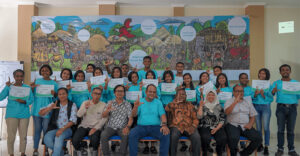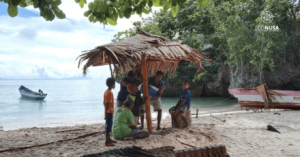
Controlling waste in the ocean needs to be done by all parties in various ways. Because the garbage in this area comes from human activities on land and sea.
In a study conducted by The Ocean Cleanup Foundation, it is estimated that around 80,000 tons of plastic are in the ‘Greater Pacific Trash Area’ which runs between California and Hawaii, United States. The amount is 16 times more than previously reported.
The study, published in the scientific journal Scientific Reports, said that garbage accumulates in five areas in five oceans. The largest area is between Hawaii and California.
Some steps to prevent and control human waste behavior on land have been heard, ranging from improving people’s behavior in consuming plastic, implementing reuse, reduce, recycle, management of the final processing site, to implementing environmentally friendly packaging to replace plastic.
However, structuring behavior in the oceans has not been heard much. That is why the International Maritime Organization (IMO) promises to start paying attention to the big problems caused by plastics in the oceans. According to the plan, this will be done by lowering the Action Plan (Action Plan) which aims to strengthen existing regulations and introduce procedures to reduce plastic waste in the oceans from ships.
In fact, disposing of plastic into the sea has become prohibited in various regulations to prevent pollution generated from ship waste under the International Convention for the Prevention of Pollution from Ships (MARPOL), which also requires the government to ensure facilities at the port are suitable for accommodating ship waste.
In addition to information, in the London Convention and Protocol relating to disposing of trash in the ocean, only a few materials are permitted to be disposed of. And these rubbish, must be absolutely certain to be free of plastic.
Recognizing that much needs to be done in relation to health and environmental problems caused by ship’s plastic waste, the Meeting of IMO participating countries agreed that the action plan must be fulfilled by 2025, to be implemented by all ships, including fishing vessels .
Fishing boats can also produce this plastic waste hazard. For example, a net that is lost or abandoned by a fisherman can ensnare a propeller and rudder.
IMO Action Plan to tackle marine plastic waste from ships
The reaction noted that plastic waste entering the ocean was caused by activities carried out on land and sea as well. Both macroplastics (for example, large plastics such as plastic bags, mineral water bottles and fishing equipment) and microplastics (small plastic particles that are generally 5 millimeters or less) survive in the oceans and produce harmful impacts on life and biodiversity in the ocean, and also has an impact on human health.
In addition, plastic waste has a harmful impact on tourism, fishing and shipping activities. Plastic material actually has the potential if returned to the economic aspect if intended for reuse and recycling. A study shows that even though there is a regulatory framework to prevent plastic waste from ships, it is still carried out.
The action plan will provide a mechanism for IMO to identify what results will be obtained and how to obtain those results. In other words, this Action Plan will be more measurable. The action plan was made from an existing regulatory framework, and identified the possibility to strengthen the framework and introduce new procedures to overcome problems related to plastic waste generated by ships.
Specific procedures include:
A. Further studies related to plastic waste on ships
B. Check availability and feasibility of waste receiving facilities at ports
C. Consider requiring marking of fishing gear, in collaboration with the United Nations Food and Agriculture Organization (FAO)
D. Encourage reporting of lost fishing gear
E. Facilitating the delivery of returned fishing gear to facilities on the beach.
F. Review regulations related to training for fishing vessel crews and introduction of seamen to ensure knowledge of the dangers of ship waste.
G. Considering the establishment of a mandatory mechanism for announcing loss of luggage in the sea and identifying the amount of loss
H. Increase public awareness
I. Strengthening international cooperation, specifically FAO and UN Environment
Meanwhile, for the reduction of plastic waste generated and taken from fishing vessels, the rules include considerations for making an IMO vessel identification number required for fishing vessels of a certain size; Consideration for making marking of fishing gear with a mandatory identification number of the ship in cooperation with FAO; further investigation on recording identification numbers for each item of fishing gear on a fishing vessel; Remind each country to collect information on all fishing gears that are accidentally lost or deliberately released at sea; Consider developing best management practices to facilitate incentives for fishing vessels that collect their broken fishing gear and bring them to the receiving facilities at the port, in collaboration with FAO.







